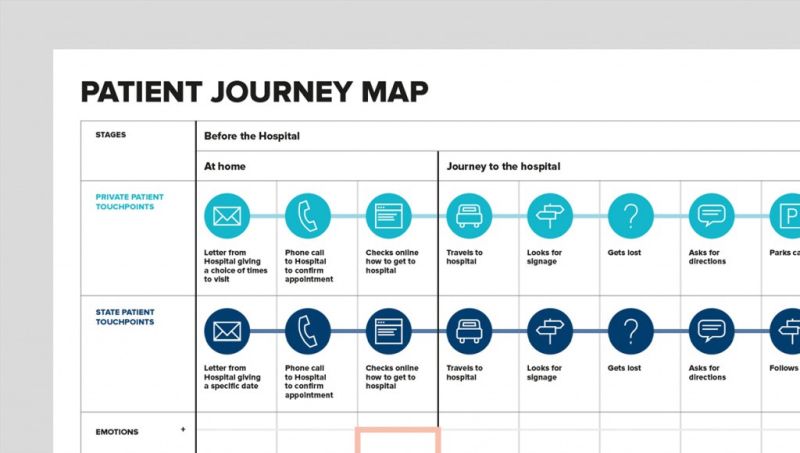Maximising your efforts to reach out to the patients is the new norm. Healthcare patients have multiple options to choose from when they are searching for a doctor. People look for options online before they reach out to a doctor or any other healthcare service.
With 77% of internet users dependent on Google to research for information related to health issues, your healthcare organisation needs to plan online strategies for improving marketing efforts so that you can reach out to patients.
A well-planned digital marketing strategy for promoting healthcare services enables an organization to connect with patients looking for information on the internet. This is where healthcare digital marketing service providers such as Prevention Digital come to play to set out effective digital marketing strategies.
Here are the best eight ways to make it easy for patients to find your healthcare organisation.
1. A Healthcare CRM with a patient portal

Healthcare CRM ensures that you have all the information related to a patient in one place. You have complete information for each patient and new leads. You can connect with each patient through various modes like email, phone, personal messages such as reminders for an appointment, follow-up treatment, and post-care treatment.
A healthcare CRM ensures you have each patient’s information well organized. The detailed information available enables you to connect with a patient at the right moment. You can use this information to send reminders, personal messages, newsletters with health tips and post-care treatment procedures.
Today’s patients are tech-savvy. If you give them access to a patient portal, designed specifically for patients, they can keep track of their treatment. It becomes easy for them to take necessary steps like requesting an appointment, connecting with a physician, managing medicines, and a lot more.
You can create a personalised virtual healthcare experience with a patient portal.
2. Email Marketing for Effective Communication

Email as a marketing channel is highly useful and cost-effective at the same time. The opening rate for healthcare emails is 23.46% with an actual 3.62% click-through rate. This is one of the highest open rates across industries.
You can make patients an active part of their own treatment through emails. From the day a patient contacts the organisation to the day they are discharged, they can be informed about the steps involved through email. This would keep them prepared at every stage, and you, as an organisation, can create value for them.
Post the treatment, you can send them emails advising how they can take better care of themselves. This will build value for your brand.
3. Why Blog about Your Healthcare Organization

Blogging about lifestyle and medication educates your readers and establishes your organisation as an authority in healthcare. The healthcare information you can provide through a blog is unlimited. You can educate your existing and prospective patients, alike, about the self-diagnosis methods or help them understand the symptoms of a disease associated with age and gender.
As doctors always say, prevention is better than cure, you can inform people about ways to lead a healthy life. This simple step goes a long way in developing patients’ trust in you and your services. A blog can work as a funnel to bring patients to your portal.
A section of a blog can talk about the hospital and its features. You can feature the stories of different departments and how they took care of their patients. Patient recovery stories can resonate with people facing similar problems.
4. Video Marketing

Video marketing enables people to visit your organisation virtually and learn about what you do. You can create videos for different sections of an organisation and the facilities you provide.
Physician Profile Video
Videos talking about physicians, their expertise, and how they approach a problem can humanise the experience of getting treated. People want to know who is going to treat them and what kind of expertise they carry. Trust is an essential factor for patients while choosing their doctor. You can bridge this gap with video profiles of your doctors on your website. Physicians can shoot their videos for Instagram and can edit them accordingly with the help of a video editor such as VideoCreek.
Patient Testimonials
People develop trust and faith by learning through each other’s experiences. Patient testimonials are a stamp of approval for the healthcare treatment you provide. A success story resonates with everybody.
5. Social Media

40% of consumers have confirmed that information on social media influences the way they deal with personal health.
41% of people say that information on social media affects their choice of a doctor, medical facility, or a hospital.
Social media has created multiple possibilities for healthcare organisations. You can communicate with people online in real-time. Through a platform like Twitter, Facebook or YouTube, an organisation can build authority and trust related to health issues, services, and create health alerts.
YouTube can be used to create your channel. You can shoot your own videos with an advanced phone camera. You’ll need a YouTube intro maker and editing software to polish your videos.
You can also run Facebook ads on Facebook or indulge in groups to keep connected with customers. If you want to create videos for Instagram, you can shoot your videos & edit them through an editor.
Social media can be leveraged to become a trusted brand for healthcare services.
6. Using PPC and display ads
You can rank well on search engines through organic search; however, there are display ads above the search results competing with you. Organic search is an essential method in generating traffic for your healthcare website. But, paid ads can be used to highlight specific healthcare services.
Pay-per-click advertising can increase visibility by keeping your website at the top of search results. Through a blog or social media, you can educate, but if you want to promote specific services, you want to reach people using the keywords they type in the search box.
7. Sales Funnel and Consumer journey

Building an online journey for a patient from the point they reach your website is essential. Addressing the pain point for a consumer is only a beginning. From the moment a patient lands on your website, there should be CTAs to guide them to take specific actions.
You’ve built an excellent website but are you waiting for a person to go to your contact page and call you? Reach out to them at every stage. Are they looking for more information? Are they looking for specific services? Are they looking for a physician? You need to incorporate CTAs at every entry and exit point.
Your prospect should know the next steps to connect with you.
8. Tracking and Measuring ROI

You can track a campaign at every step. For every CTA, whether you want a consumer to sign-up for newsletters or a page where they provide information for an appointment, you should analyse how a campaign is performing.
If you specialise in certain areas of treatment, you should track which keywords are leading patients to take action and contact your organisation.
You can also do A/B testing for landing pages and PPC. For an effective marketing strategy, you should learn from the ROI for your campaigns.
Clearly defined goals like setting an appointment, seeking information for a particular treatment or learning more about the physicians should enable you to track the ROI. Facebook has no limits when it gives you reports and analytics about the performance of your Facebook ads.
If you do not track ROI, you will never know which strategy worked for your prospects. Your ROI helps define the best digital marketing strategy for your healthcare organisation.
Conclusion
Healthcare marketing is a combination of different strategies. With each strategy, as a healthcare organisation, your goal is to show the prospects that you are there with them at every step of their journey.


